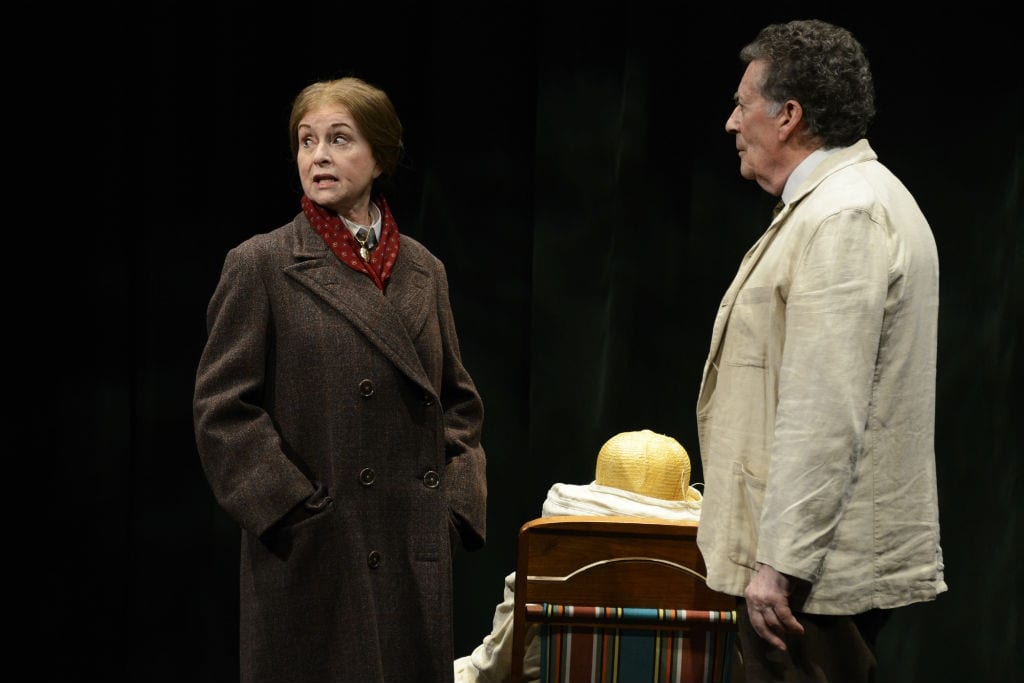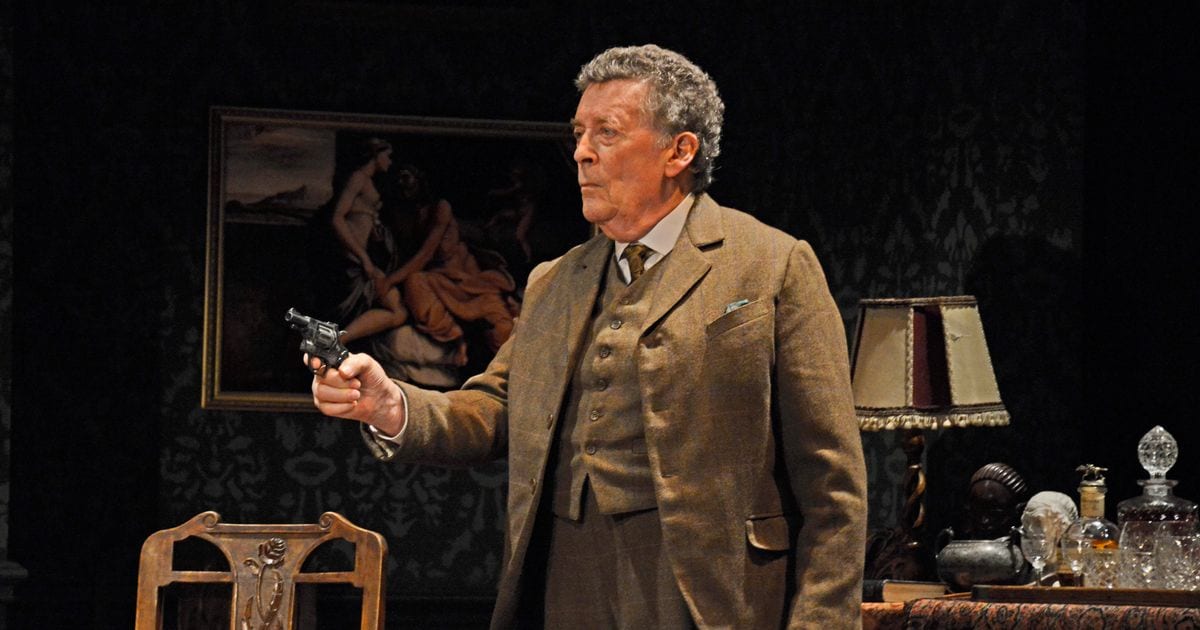Simon Reade’s clever homage to Arthur Conan Doyle, Sherlock Holmes: The Final Curtain, plays like a well made West End Drawing Room Thriller of the 1950s in some ways, is a kind of latter day Agatha Christie in the style of The Mousetrap while also being a bit of a humorous send-up of the genre; it plays with the things we know about Sherlock Holmes and Conan Doyle himself in very astute ways. A particularly fascinating strand is the introduction of Spiritualism into the workings of the plot, especially when one knows that in real life Conan Doyle pursued this increasingly fashionable quasi-religion of his times just as some people pursue Scientology today. The play has a well-constructed, tightly coherent plot in which all the elements turn out to be relevant.
Holmes is older in this story, in his late sixties – the play is taking place in 1921 and 1922 – so we also have a certain amount of post war contrast with the earlier, Victorian Holmes; and some pretty interesting uses for then-modern technology. He lives in retirement on the south coast and is somewhat paranoid about his old enemies. He keeps bees. He suffers from rheumatism. I don’t want to give anything away, but, as with Conan Doyle’s stories, the tale is full of little games played on the audience until the dénouement when suddenly what is really going on becomes evident and some of the apparent red herrings turn out to be proper clues after all. There is a clever framing device to set the era that we are in: old Doctor Watson is reading his latest story about Holmes on the new-fangled radio; and then the real story starts with a dead body on Holmes’s private beach and some perceptions by Holmes that only become clear at the end. Then Mary Watson turns up to tell Holmes that she has seen the ghost of her dead son. Pay attention. The first half of the play is a series of set-ups, effectively; and the second half is a series of pay offs that I will bet you did not see coming, but which nevertheless make real sense once they are revealed. There is also quite a bit of gentle, satiric humour.

The character of the elderly Holmes is nicely conveyed by Robert Powell, whose portrayal of a man with a kind of undiagnosed Asperger’s syndrome is attractive and stimulating at the same time. Timothy Kightley is appealing as the aged Doctor Watson; and Roy Sampson makes a strong impression as Mycroft Holmes, the older brother. Indeed, his appearance and a major scene between the Holmes brothers seemed to me to be a highlight. I wish that there had been more of Mycroft; and I certainly felt that he made such a strong impression that it would have been good to involve him more in the ending of the tale. Lewis Collier makes a nice impression as Detective Inspector Newman; I liked Anna O’Grady as the daughter of Mrs Hudson who has now taken over from her mother at 221B Baker Street: and Liza Goddard is both convincing and compelling as Mary Watson, Dr Watson’s now-estranged wife. The development of this tale ties in nicely with what we know of the characters from past stories and novels and the surprise revelations make retrospective sense. Jonathan Tensom’s stage set is pure ‘Well Made Play” design, attractive West End retro that is completely approriate; and Director David Grindley does a neat, professional job in the staging and story telling.
All in all, this is a very pleasant evening in the theatre, like seeing an episode of Inspector Morse, Endeavour or Midsummer Murders live on stage. It is both that entertaining and that predictable in a sense; though I hazard that the ending will be a surprise you did not expect, in the true tradition of a good thriller. It ain’t got a lot of depth but it is a lot of fun and it tickles the intellect. And it makes me want to re-read A Study in Scarlet, The Sign of Four, The Valley of Fear and most of the shorter stories. They are, as I recall, remarkably well written; as is another Sherlock Holmes homage, The Seven Per Cent Solution by Nicholas Meyer.

